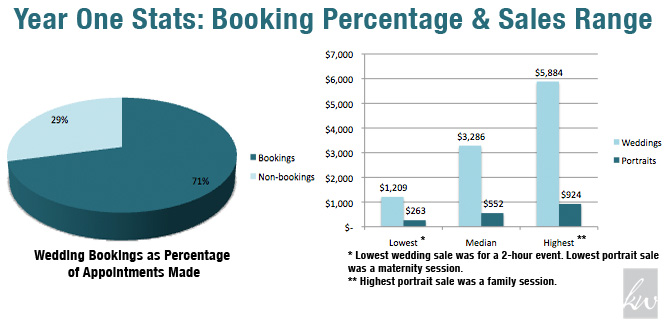This is the fourth post in my six-part series, “How I Sold $100K My First Year in Business.” Looking back on my first year of photography business success, my fifth and sixth takeaways are:
#5. I was in a right-sized market. My initial home base had a population of 1.6 million people, providing sufficient prospects to fill the pipeline while remaining small enough for me to get noticed. Also, it was 2006-2007 when traditional advertising still worked (but that’s another story).
When I moved to the San Francisco Bay Area in 2008, it was much slower-going. A metropolitan area of 7M+ people, there was a lot more noise to break through to get my message across. During my first full year in California (2009), for example, I shot only nine weddings vs. 30 two years prior.
Where you’re located can make a big difference in how quickly your business takes off. Tiny markets make it easy to get the word out about what you’re doing, but they also may be too small to support the number of photographers (or other creative entrepreneurs) present. Major metropolitan areas offer opportunities for long-term pipeline development but can make it very difficult to get known not only due to their sheer size but also because of added competition. However, I know people who have built strong businesses in markets of all sizes; what’s required to do so beyond perseverance typically varies by location, of course.
#6. I was probably too cheap. Most prospective clients booked me. Of 38 appointments scheduled with wedding prospects during year one, 27 booked me (that’s 71 percent!). My remaining wedding clients that year booked without an in-person meeting. This stat suggests that my prices were too low. It may seem hard to believe when you see the sales chart below, but why else would close to three out of every four prospects book? There were plenty of other talented and personable photographers in the market.

Pricing is a big decision for any entrepreneur, and in many cases it requires some trial and error. While you have to sell your services and products to make enough money to cover costs—you don’t have a business without that—there’s wiggle room in how much more than your costs you need to charge. Common wisdom says that charging somewhere in the ballpark of two- to four-times product costs can produce a viable business, but pricing services can be a bit more challenging. Here’s a decent guide to the topic.
Do you have any market or pricing tips you’d like to share? Let me know in the comments.
Cheers,
If you missed a post in my “Business Success” series, here they all are in order:
- Part 1 – How I Sold $100K in Year One as a Wedding and Portrait Photographer
- Part 2 – On Specialty & Skill
- Part 3 – On Peers & Enthusiasm
- Part 4 – On Market & Pricing
- Part 5 – On Instincts & First Impressions
- Part 6 – On Doing the Work & Believing in Yourself
















